- Administrator
- Albums and Singles
 Wyrding may be a relatively new project, this being their debut album other than a single that was previously a limited hand-made object, now reissued as a cassette and bonus tracks on the digital version oft his album. The band, however, is led by Troy Schafer (also a member of Kinit Her and Wreaths, amongst many others) and they have deep roots throughout the Wisconsin underground scene. The resulting album is an idiosyncratic blending of black metal and neofolk minimalism that also draws from religious music and other fields, but comes together in a way that somehow manages to make perfect sense.
Wyrding may be a relatively new project, this being their debut album other than a single that was previously a limited hand-made object, now reissued as a cassette and bonus tracks on the digital version oft his album. The band, however, is led by Troy Schafer (also a member of Kinit Her and Wreaths, amongst many others) and they have deep roots throughout the Wisconsin underground scene. The resulting album is an idiosyncratic blending of black metal and neofolk minimalism that also draws from religious music and other fields, but comes together in a way that somehow manages to make perfect sense.
Instantly from the first moments of "Poltergeist," the mood is set for the entirety of the record.Leading off with exasperated breathing and far off, pained human voices, the band quickly launches in to a slow funeral march.Schafer's deep, guttural voice channels the darkest of vibes, as the rest of the band proceeds with a creeping, shuffling elegance.The pace is slow, but the dynamic alternates between heaviness and open space.With the addition of organ and the rest of the band contributing chanting vocals, there is more than a hint of liturgical drama to be had.
The pace and vocal style continues clearly into "Longing's End," but the band chooses to focus on a clean, old school hard rock/metal guitar tone throughout that contrasts the sacred music elements a bit more.That style continues into "False Concept of Voyage," which retains the big metal guitar sound, but a lighter atmosphere and more vocal harmonizing.The final result ends up being more melodic and folk-like though, before coming to an abrupt end.
On the second half of the album, Wyrding split between two short instrumental interludes and two more fully fleshed out songs.Opening with "Impression I," lengthy guitar soloing and tasteful accompaniment make for a lighter sense of melody that builds to a crushing crescendo.This segues brilliantly into the piano driven "Steaming Blood Ascends Beyond the Moon," an overall calmer work despite its grim title.Percussion is sparse, the guitar melodies are strong, and the vocals are lighter.
The following "Ahold A Wren" sees the band darkening things up a bit more, with heavier guitar and sharp, shimmering drums taking the focus.Schafer's vocals are a bit less doomy, but still have a tortured quality to them, amplified by the layered chanting accompaniment.The closing "Impression II" ends the record on a synth heavy, deep vocal note.The CD version includes the two songs from the Agony in Being single, which thematically fit with the rest of the release, though have an overall more experimental, cut-up quality to them compared to the more traditional song-like arrangements of the self titled single.
Wyrding's debut full-length album may not be for everyone, with its strict adherence to a dirge-like pacing and Troy Schafer's deep, sepulchral vocal inflection.However, its rich, yet deliberately sparse instrumentation conveys a depressing beauty that makes it a truly memorable record that draws from a multitude of styles without latching onto any one too specifically. It is an icy beauty that may take some time to fully reveal itself, but it is extremely satisfying when it does.
samples:
 
Read More
- Administrator
- Albums and Singles
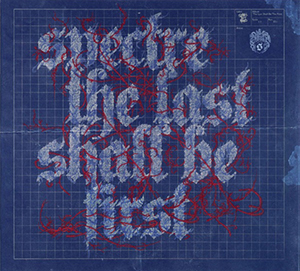 Spectre, aka Skiz Fernando, was at the forefront of the sadly short-lived ambient dub/illbient/whatever genre hybrid that popped up in the middle to late part of the 20th century. While many have come and gone that were associated with the loosely defined style, Fernando and his seminal Wordsound label have endured, continually releasing music that may not have been commercially viable, but always retained artistic integrity and conceptual complexity. On his tenth solo record, his trademark sinister moods with infectious beats continues. But best of all, it sounds just as fresh as his debut The Illness did some 21 years ago.
Spectre, aka Skiz Fernando, was at the forefront of the sadly short-lived ambient dub/illbient/whatever genre hybrid that popped up in the middle to late part of the 20th century. While many have come and gone that were associated with the loosely defined style, Fernando and his seminal Wordsound label have endured, continually releasing music that may not have been commercially viable, but always retained artistic integrity and conceptual complexity. On his tenth solo record, his trademark sinister moods with infectious beats continues. But best of all, it sounds just as fresh as his debut The Illness did some 21 years ago.
I must confess some level of bias towards this genre that Fernando was one of the first practitioners of, as it was one of the first musical trends that I, as an isolated teenager, felt as if I was there as the seeds were being sown.My first exposure was via the beat oriented projects of Mick Harris and Justin Broadrick (Scorn and Techno Animal, respectively), but I began exploring further.I am not sure if it was Fernando’s guest vocals on Techno Animal’s Unmanned 12" ora contribution to the Electric Ladyland compilations, but I soon found myself checking out his work as Spectre and other side projects on his Wordsound label, which was one of the first that laid the foundations that connected the grim UK post-industrialists with the avant hip-hop scene that was burgeoning at that time.I am also pretty sure it was something I wrote a review of during my first (embarrassing) stint as a music critic.
Even with historical importance aside, Fernando had an impeccable ability at the time to blend strong beats with bleak, harrowing instrumentation; a sound that channeled the best of the early RZA productions but taken to the next level.The opening moments of "Enter the Holy Terror" make it abundantly clear that he has continued to work that style.Sinister hums and deep guttural chants lead into subterranean rhythms and oppressive production, setting the mood immediately to "dark".With the addition of dramatic samples and Fernando’s own processed spoken word delivery; the stage is set perfectly well.
In some ways the mood he establishes on The Last Shall Be First is not too far removed from the worlds of black metal and noise, because he piles on the dark grimness to just the right amount, setting the mood but still keeping an underlying sense of self-aware playfulness that ensures it never becomes self-parody.On a piece such as "Darkstep 7", sci fi noir dialog samples are peppered throughout blippy rhythms and catchy beats, keeping the tension while the mix is comparably less oppressive."Osiris Rising" has a similarly less dense mix, instead he emphasizes a funkier hip hop drum loop and tasteful synth accents.
One striking thing about this album, especially compared to the earliest Spectre releases, is just how diverse the sounds and instrumentation has become, while remaining thematically tight.The snappy beats and ragged synth leads of"The Annunaki's Return" drift more into grimy techno territory, but its jerky overall structure keeps it completely unique."Jamrock" has the inclusion of dancehall toasting and lo-fi synth noises, coming together like a truly futuristic form of dub.For "Wipe Out", Fernando goes all in with heavy electronics and a distorted bass guitar like lead to make for possibly the most abrasive moment on the record, but a brilliant one via its sharp sputtering beats and extraterrestrial samples smattered throughout.
As Spectre, Skiz Fernando has not lost his penchant for underground hip-hop productions, a sound that may not have caught on at a large scale, but one that has remained faithful since he began the Wordsound label over two decades ago (with a little help from underground stalwart Bill Laswell).At this point in his career though, he is still making music as fresh and vital as when he first started, and with a true focus and dedication to his art that shines through brilliantly throughout The Last Shall Be First.Even with his side career as a food critic and purveyor of Sri Lankan spices and recipes, his dedication to tense beats and sinister, yet earworm grade electronic atmospheres is unparalleled.
samples:
 
Read More
- Administrator
- Albums and Singles
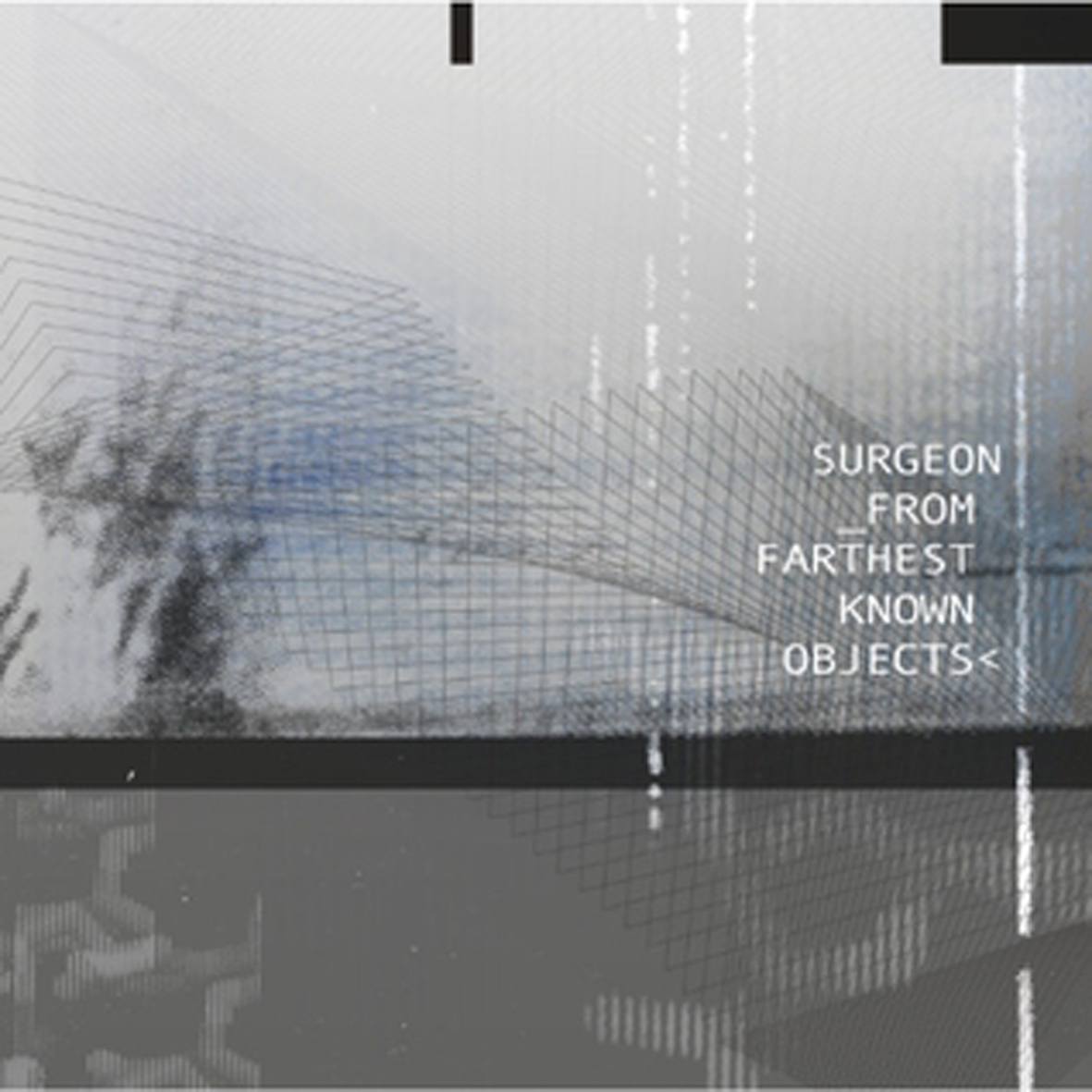 This seventh album under the Surgeon moniker from UK techno iconoclast Anthony Child is a bit of an unexpected divergence from his previous work. Naturally, the pummeling repetition and industrial textures remain delightfully intact, but From Farthest Known Objects is considerably weirder and messier than I would have expected (in a good way).  There is a fairly straightforward explanation for that transformation, as Child discovered that a particular hardware set-up yielded sounds so bizarre that he found himself wondering if he had inadvertently created a receiver for distant intergalactic transmissions.  That is only half the story though, as From Farthest Known Objects works so beautifully only because Child had both the ability and vision to harness those sounds in a compelling way.  I do not know if this is necessarily the best Surgeon album ever, as Force + Form is widely considered to be canonical, but it sure feels that way to me.  If it is not, it is at the very least quite an impressive late-career evolution.
This seventh album under the Surgeon moniker from UK techno iconoclast Anthony Child is a bit of an unexpected divergence from his previous work. Naturally, the pummeling repetition and industrial textures remain delightfully intact, but From Farthest Known Objects is considerably weirder and messier than I would have expected (in a good way).  There is a fairly straightforward explanation for that transformation, as Child discovered that a particular hardware set-up yielded sounds so bizarre that he found himself wondering if he had inadvertently created a receiver for distant intergalactic transmissions.  That is only half the story though, as From Farthest Known Objects works so beautifully only because Child had both the ability and vision to harness those sounds in a compelling way.  I do not know if this is necessarily the best Surgeon album ever, as Force + Form is widely considered to be canonical, but it sure feels that way to me.  If it is not, it is at the very least quite an impressive late-career evolution.
To his credit, Anthony Child was admirably persistent in following through on the album’s root conceit, going so far as to enlist an astrophysicist friend to hypothesize where the various interstellar transmissions may have originated.  As a result, From Farthest Known Objects is riddled with unwieldy song titles like the opening "EGS-zs8-1."  For the benefit of the astronomically ignorant, that is the name of the oldest and most distant galaxy ever observed by humankind.  And for the purposes of the album, the transmissions from said galaxy are apparently a squelching and sizzling one-note bass pulse and a quivering series of ascending bleeps. I suppose the bleeps do sound a bit like imaginary deep space transmissions, but nothing on Farthest Known Objects sounds like such a revelatory, otherworldly sound that my hopelessly limited earthling brain cannot even begin to process it.  There is a lot of weird music out there and this album is actually much less bizarre than much of my record collection, but it is nevertheless still quite imaginative by both Earth and dance music standards.  The appeal of this album goes much further than its concept and strangeness of its sounds, as the real revelation is that those messy and unpredictable sounds beautifully counterbalance the obsessive repetition and machine-like precision of Child's grooves.  That added visceral, murky, and warped touch is exactly what Surgeon was always lacking: a suitably chaotic foil for Child's unrelenting precision and perfectionism.
While Child admittedly employs a bit of a recurring formula here, it is one that works quite nicely: a sort of pummeling and sputtering "locked groove" aesthetic.  The best pieces (in most cases) tend to be those which boast the best grooves or just erupt from the speakers most convincingly, such as the opener.  Child has a lot of tricks up his sleeves, however, so there are some very appealing aberrations as well.  For example, the lumbering and sizzling "Sxdf-Nb1006-2" periodically reaches wild crescendos where it feels like it is being twisted and pulled apart as if by a crushing gravitational phenomenon.  Another highlight is the starkly minimalist "BDF-3299," which embellishes its shuffling beat with ominous hums and metallic textures to great effect.  "A1703 zD6" is yet another great curveball, as its insistently buzzing and throbbing rhythm is periodically joined by a rolling, seasick, and out-of-sync motif that completely changes its mood and feel.  In a more general sense, I also very much appreciate the pace and abundantly evident control displayed on this album, as Child avoids the obvious temptation to give in to the cathartic entropy of noise.  This easily could have been one explosive show of force after another, but these pieces all take the harder (and more lastingly satisfying) approach of harnessing that chaos into a structure of mesmerizing repetition.
The single most notable aspect of it all, however, is Anthony Child’s ability to get the most out of so seemingly little.  I cannot think of anyone else who could have made this album work as well it does, as Child takes eight songs that all sound like they were made from just a beat and a broken shortwave radio and manages to imbue them all with life and individual character (no easy feat without the benefit of melodies or hooks).  Even the beats themselves are nothing particularly special, but that is because they are entirely in service of creating obsessively repeating, hypnotic pulses.  Granted, Child aggressively mangles that pulse in a few instances.  In general, however, he manages to give the illusion of a locked groove or recurring loop while expertly tweaking the dynamics to create a satisfying arc and a compelling ebb and flow.  Sometimes those shifts are something as obvious as adding or subtracting a cymbal at just the right time, while other times the changes are much more nuanced and textural.  From Farthest Known Objects feels a lot like watching a master architect work…or at the very least a serious Jenga prodigy (a comparison best illustrated by the gradual removal of components at the end of "EGS-zs8-1").  This album is almost as satisfying to deconstruct as it is to hear, as the sheer craftsmanship involved is impeccable and inventive throughout.  Flawless execution aside, however, From Farthest Known Objects is equally significant as a major creative breakthrough, as Surgeon has managed to find a niche within the half-noise/half-techno milieu that resembles no one else.  This is a stellar album.
 
Read More
- Administrator
- Albums and Singles
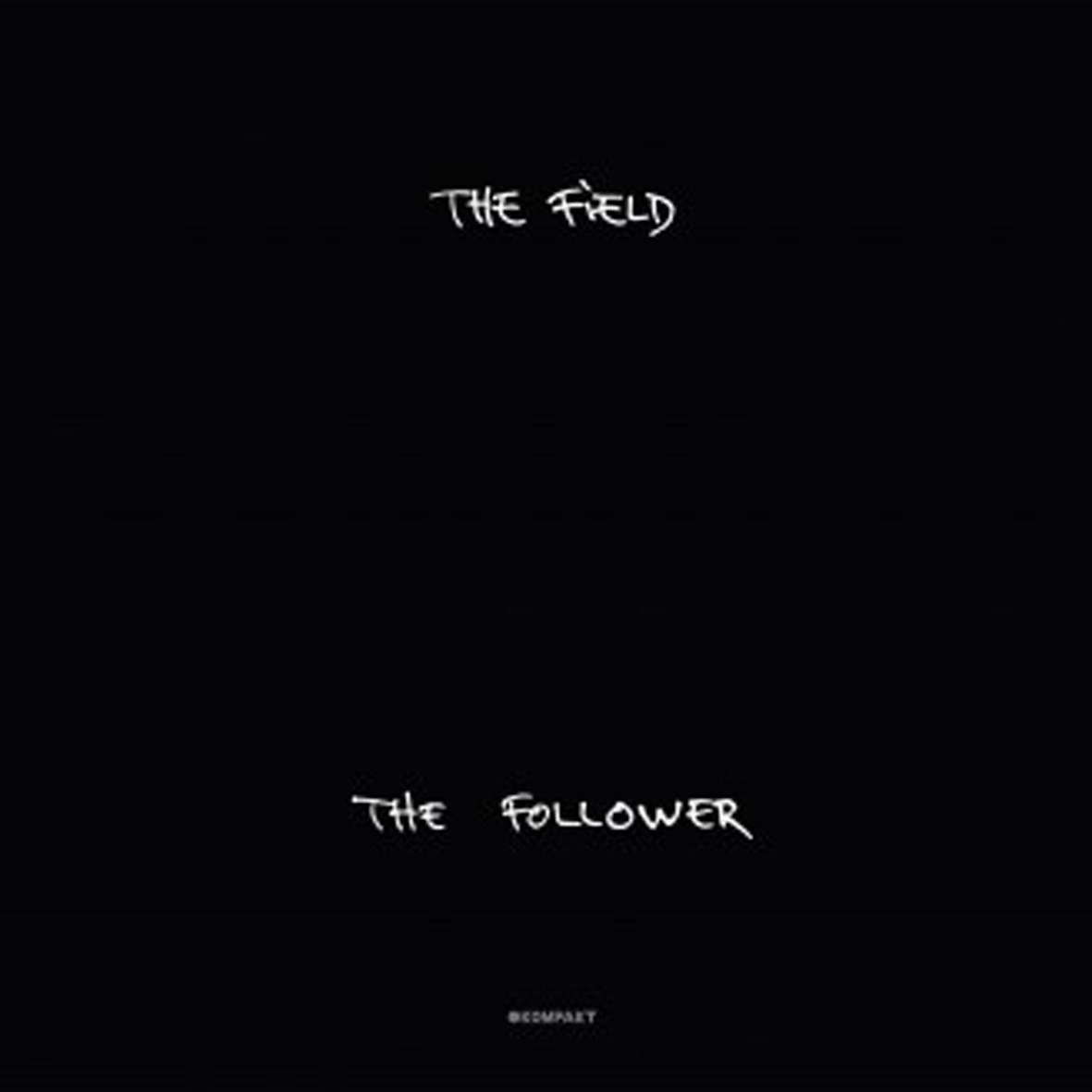 I have a curious relationship with Axel Willner’s music, as I have always thought that he is kind of brilliant, but generally too perfect, poppy and dancefloor-focused to appeal to my personal sensibilities.  Also, I keep forgetting that he even exists for some reason, so I am continually surprised every time that he releases a new album and I discover that I like it.  Predictably, I am most drawn to his darker, weirder side, which previously peaked with Cupid’s Head’s stellar "No.  No…"  Every album by The Field has a couple of great songs though and The Follower is no exception to that trend.  In fact, it is probably my favorite of Willner's albums to date, as it is as flawlessly crafted as ever, but considerably more shot through with ghostly textures and undercurrents of melancholy than I ever would have expected.
I have a curious relationship with Axel Willner’s music, as I have always thought that he is kind of brilliant, but generally too perfect, poppy and dancefloor-focused to appeal to my personal sensibilities.  Also, I keep forgetting that he even exists for some reason, so I am continually surprised every time that he releases a new album and I discover that I like it.  Predictably, I am most drawn to his darker, weirder side, which previously peaked with Cupid’s Head’s stellar "No.  No…"  Every album by The Field has a couple of great songs though and The Follower is no exception to that trend.  In fact, it is probably my favorite of Willner's albums to date, as it is as flawlessly crafted as ever, but considerably more shot through with ghostly textures and undercurrents of melancholy than I ever would have expected.
One aspect of Willner's artistry that I find endlessly fascinating is his ability to brazenly embrace hackneyed techno tropes, yet still find a way twist them into something surprising and original.  Obviously, I would prefer it if he jettisoned rigid predictability altogether, but Willner's artistic decision to be creative and experimental within very limited "pop" structures is endearingly perverse.  A prime example of this aesthetic is the opening title piece, which takes a simple house-inspired kick drum and a very "trance" sequencer pattern and uses them as a propulsive foundation for a spectral, stuttering hook.  It is not exactly a revelatory feat, but it is an impressively nuanced one and it admittedly sounds quite great once the push-pull bass pulse kicks in.  There are also some unexpectedly dissonant howls of feedback near the end, making "The Follower" a wonderfully and covertly subversive bit of thumping, well-produced dance music.  Elsewhere, however, Willner steps more firmly into the ambient/dance grey area that he has staked as his own.  "Pink Sun" is probably the weakest of the lot, but it is still quite imaginative, bolstering yet another formulaic house beat with chopped-up, whispered vocal snippets and languorous, woozy guitar motif.  It never quite catches fire, but it shows that even Willner's most subdued and overly slick pieces often have some good ideas at their core.
Impressively, "Pink Sun" is the only real misstep/filler on an otherwise stellar album, as each of the remaining four pieces is exceptional in its own way.  The most obvious highlight among them is "Monte Verità," which combines several obsessively repeating and stuttering loops to wonderfully haunting and hooky effect.  There are also some echoing snatches of speech in the background to nicely enhance the hallucinatory tone.  In fact, I suspect this might be the triumphant birth of Hauntological Disco.  The following "Soft Streams" is even more spectral, slowing down the pace to a pleasantly dubby crawl to make space for a wonderful array of floating and panning voices.  "Raise the Dead," on the other hand, reprises the "Monte Verità" formula of a thumping kick drum pulsing beneath a gorgeous host of skipping loops, but does so in a much more understated and slow-burning fashion.  Finally, the closing "Reflecting Lights" takes The Field’s aesthetic in an unexpectedly divergent direction, stretching out for 14-minutes and gradually transforming from warm and hazy near-ambient drift into a considerably more interesting locked groove/skipping CD motif.  It admittedly comes dangerously close to leaving me cold, as Willner spends a little more time on the toothless ambient side of the spectrum than I would prefer.  Once the chord changes start to transform the final "locked groove" theme, however, "Lights" feels gorgeous and epic enough to make me forget how long it took to get there.
As far as I am concerned, the only significant flaw with The Follower is that "Pink Sun" is a 9-minute lull that immediately threatens the momentum begun with the title piece.  It is hard to be too disappointed in that though, as that still means that five of The Follower’s six songs are excellent.  That is a quite an impressive hit-to-miss ratio.  I suppose I also miss some of the impish humor that found its way into some of The Field’s earlier work, but I do not think it would have sat easily within The Follower’s darker mood.  This just is not the proper place for Lionel Richie samples.  Even without trying to inject humor into these pieces, however, Willner had quite a difficult balancing act on his hands, he is essentially two completely different artists: one fun and hook-savvy dance producer and one guy who is hell-bent on concocting the perfect hybrid of prime Oval and classic dub-techno.  Those two threads seem inherently incompatible and would lead most artists into the side-project route, but Willner seems to see reconciling those two sides as an endlessly appealing challenge.  More often than not, it works: experimental music is rarely this fun and pop music is rarely this experimental.  This is a niche that The Field owns quite conclusively and The Follower is one of the Willner's finest albums.
Samples:
 
Read More
- Administrator
- Albums and Singles
 On his last couple of albums, Glenn Jones has let the world into his music. Back in 2011, the rattle of Commonwealth Avenue’s B-line train snuck into The Wanting. More or less an invisible addition, it was the consequence of recording in an apartment that sits on one of Boston’s busier thoroughfares. My Garden State opened the doors and windows and walked out into the New Jersey neighborhood of Glenn’s youth. It has a thunderstorm and chimes and an annotation about frogs, and they are more than just filigree on the proverbial fretboard. "Alcouer Gardens" would be a different song without the rain and thunder, and the non-stringed sounds add details to the loose narrative announced in the titles. Now comes Fleeting, Jones’s sixth solo album, recorded in Mount Holly, New Jersey with Laura Baird. The studio windows are open again and there are birds in the trees, but the emphasis placed on the influence of people and places cuts at the idea that there is an inside and an outside to begin with. It argues that music, often tucked away inside headphones or living rooms or performance spaces, is more than a confined curiosity of the wider human world.
On his last couple of albums, Glenn Jones has let the world into his music. Back in 2011, the rattle of Commonwealth Avenue’s B-line train snuck into The Wanting. More or less an invisible addition, it was the consequence of recording in an apartment that sits on one of Boston’s busier thoroughfares. My Garden State opened the doors and windows and walked out into the New Jersey neighborhood of Glenn’s youth. It has a thunderstorm and chimes and an annotation about frogs, and they are more than just filigree on the proverbial fretboard. "Alcouer Gardens" would be a different song without the rain and thunder, and the non-stringed sounds add details to the loose narrative announced in the titles. Now comes Fleeting, Jones’s sixth solo album, recorded in Mount Holly, New Jersey with Laura Baird. The studio windows are open again and there are birds in the trees, but the emphasis placed on the influence of people and places cuts at the idea that there is an inside and an outside to begin with. It argues that music, often tucked away inside headphones or living rooms or performance spaces, is more than a confined curiosity of the wider human world.
Fleeting begins with the sprightly see-saw rhythm of "Flower Turned Inside-Out." It’s a cheerful song that contrasts the up-and-down pulse of alternating strings with Glenn’s dexterous left hand, which snaps, rolls, and darts across the fretboard in a kind of dance. The melodies and harmonies are bright and inventive, sounding both controlled and spontaneous, and the mood is playful—this is Glenn Jones in a familiar place letting his mind and instrument meld into a single intuitive apparatus.
Then the light goes out and the rhythm unwinds. Jones’s chords transform into floating clouds, as if he were playing them and then getting out from his chair and walking around them. Time slows down and space collapses to a free-moving point. The rest of the album is calmer. Not exactly darker, but aware of the shades of joy and sadness that come with remembering the past and seeing that it’s different from the future.
"In Durance Vile" is where the inside and outside have their first overt meeting. After a short run of angular and surprising melodies, Glenn lets out a broken chord and pauses for a moment to let it resonate in the room. At that exact moment a bird trills three or four times and pauses, like it’s waiting to see if Glenn will sing back. Everything about the song is gorgeous: its unmoored structure, which bends and stretches in all the right places, its tight melodies and unexpected developments, and Jones’s technique—the way he uses volume, tempo, and the sharpest of sharp dynamics, keen enough to cut the toughest ears in two. Together they give "In Durance Vile" the semblance of infinite variety, and yet when that bird lands in the silences between the notes, something extra pops. Call it synchronicity or coincidence, it puts Glenn in a space and time that is not the abstract space and time of a modern recording.
It’s the same space and time in which Glenn’s influences, not to mention his friends, have lived and died—Robbie Basho and Jack Rose, John Fahey and Jimi Hendrix. It’s the place where people celebrate their loved ones and remember them in all of their complexity, and with all the complexity that remembrance brings. Listen to the way Jones weaves happiness and longing together on "Mother’s Day." Listen to how he commands concrete images, moments of doubt, and uncertain feelings, pulling them all in a line when he wants with a big bluesy hook and an uncanny sense of timing. Notice how he invokes personal feelings with understated banjo lines on "Spokane River Falls," how he refuses to commit to sentimental nostalgia but simultaneously evokes familiarity and belonging. Pay close attention to the enormity in "Robbie Basho as a Young Dragon," which is curious and firm, both seeking and reaffirming, as is the way with good friends.
These connections are all sounds from the outside too, received from beyond and returned to it, with something new added. If that sounds magical or mystical it’s because Fleeting deals with magical and mystical materials. Glenn closes the album with "June Too Soon, October All Over," an extroverted panegyric to the joys of the northeast’s warmer months. It ends with the omnipresent chirping of crickets, a whole field of them trumpeting away as twilight fades to dusk. Time resumes its forward movement here, toward colder temperatures, darker beers, and shorter light, but the switch from atemporal introspection to the usual procession of events is fluid, suggesting we can move in and out of either mode at will—that, in fact, the two coexist, just like the inside world and the outside one, the soul and the universe. There’s a Wallace Stevens poem that begins, "The soul, he said, is composed / Of the external world." It ends claiming, "The dress of a woman of Lhassa, / In its place, / Is an invisible element of that place / Made visible." Glenn Jones might agree. At the very least, he knows what it means to make the invisible visible.
samples:
 
Read More
- Administrator
- Albums and Singles

Renowned Japanese innovators Boris and Merzbow have teamed up with Relapse for their new collaborative 2xCD/4xLP Gensho, one of their most daring collaborations to date. Named after the Japanese word for "phenomenon," Gensho is a unique release featuring over 150 minutes of new music spread across two CDs and four LPs, available as two separate double LP sets or a deluxe 4xLP edition.
The Boris songs are completely new, percussion-less reinventions of classic tracks from the band's storied catalog, while Merzbow's songs are entirely new compositions. The two sets are intended to be played at the same time at varying volumes so that the listener can experience their own "gensho/phenomenon" every time. As with every Boris/Merzbow collaboration, the only thing to expect is the unexpected, lending the album near-infinite potential for aural discovery and encouraging direct interactivity with the listener rarely found in such unconventional music. An untouchable paroxysm of noisy, droning experimentation!
More information can be found here.
Read More
- Administrator
- Albums and Singles

Twelve years have passed since Editions Mego boss Peter Rehberg released his last full length release Get Off on the Hapna label. In the interim, along with running the label, Rehberg has embarked on a series of soundtracks for the French artist and choreographer Gisele Vienne. Out of this collaboration the seeds were planted for the prolific KTL, guitar/computer duo with Stephen O Malley.
After a surprise return to live performance in 2015 we are now presented with Pita’s new full length document under the banner of Get In.
Get In extends the perennial Pita sound into a paradox of intimidation and beauty. "20150609" teases the juncture between the human and the tool, the improvised and composed and the analogue and digital. "Aahn" inhabits a field of electronic nebula, simultaneously inviting and alien. "Line Angel" could be a new form of minimalism for the post internet crowd. "S200729" harks to an acid most splintered whilst "Mfbk" completes proceedings as an ambient drift underscored with classical overtones.
Get in is a beautiful, engaging and unsettling listen. A multi-headed hydra presented as the ultimate dystopian sonic journey.
Out May 14th. More information is available here.
Read More
- Administrator
- Albums and Singles

Prolific Japanese artist Masami Akita, aka Merzbow here teams up with session musician, producer, and singer-songwriter Eiko Ishibashi for anew work which showcases yet another side to Akita’s monumental catalogue.
Kouen Kyoudai consists of two side long tracks that could be read as a contemporary take on the traditional avant-garde. Skittering electronics, percussion, piano, doom and noise all feature as exponents in this epic release which seamlessly incorporates many strands of experimental thought and practice.
The tension that arises from the human use of the tool is made explicit as these works unfold in a storm of ecstatic human/instrument/machine interaction. Drums hammer alongside an ecstatic drone. Notes on a piano jostle with a storm of splintered electronics.
Kouen Kyoudai highlights the pull between beauty and chaos, structure and the abyss leaving behind a thrilling display of human and technological interplay whilst opening up new paths for both musicians involved.
More information can be found here.
Read More
- Administrator
- Albums and Singles

Following her acclaimed debut Ett (Editions Mego) and the subsequent Msuic EP (Peder Mannerfelt) Editions Mego is very proud to present the second full length LP by Klara Lewis.
Lewis' skill at sculpting the hermetic shines on Too as she twists her idiosyncratic vision into nine tracks of blurred rhythms and haunted backdrops. Too is a powerful statement where the individual works tread a vast landscape as dour and aggressive elements rub shoulders with warmer optimistic works. Neither looking behind nor forward these works spiral in a time of their own devising, presenting themselves as a most audacious theatre for the ear. With a strong momentum developed from an organic outset the works move into a logic of their own, forming themselves as abstract landscapes, jitered rhythms and even pop like structures.
Too is a deeply engaging display of sound and skewered sensibility which hovers the cusp of reason and eludes the concrete. The results are Lewis’ boldest statement to date.
Out May 27th. More information can be found here.
Read More
- Administrator
- Albums and Singles
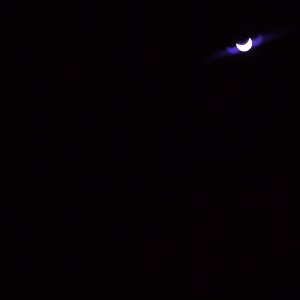 On their second album as a duo, Marco Marzuoli and Alessandro Sergente lay out a reticulated blanket of pulsing guitar tones and modulated electronic pitches dedicated to the moon. Luna’s three programmatic tracks do a remarkably good job evoking their subject. Each one sounds like it has been washed in silver light and painted onto a blue-black canvas. Their shapes are uncertain, as much shadow as form, and they radiate with uneasy energy like they know they hide more than they reveal. Appropriately, the album's every sound hovers uneasily in place, shifting the air and color around it in long undulating waves both oceanic and astronomical.
On their second album as a duo, Marco Marzuoli and Alessandro Sergente lay out a reticulated blanket of pulsing guitar tones and modulated electronic pitches dedicated to the moon. Luna’s three programmatic tracks do a remarkably good job evoking their subject. Each one sounds like it has been washed in silver light and painted onto a blue-black canvas. Their shapes are uncertain, as much shadow as form, and they radiate with uneasy energy like they know they hide more than they reveal. Appropriately, the album's every sound hovers uneasily in place, shifting the air and color around it in long undulating waves both oceanic and astronomical.
Titles like "From the Village to the Country Under the Moonlight" and "Midnight: Song of Crickets on the Green Hill" bring to mind Luc Ferrari and Presque rien No. 1, less for their titles and more for their intent. Instead of grabbing a few microphones and setting out to capture an audio portrait of a moonlit landscape, Mazuoli and Sergente grabbed a guitar, some pedals, and a fistful of tape and set out to paint an abstract narrative—they call it a triptych—inspired by the quotidian and simultaneously magical passage of the moon through the night’s sky. The titles provide context where Ferrari’s sounds would normally do that job, only Luna doesn’t need much help. If the aforementioned songs fail to inspire images of villages or crickets, they evoke the sharp glow of the lunar surface and the curved shape of the Earth and its satellite with just a few carefully layered tones.
Timbre is the biggest contributor to that success. The guitars are glassy, lightweight, striking, almost uniformly smooth and still restless. It’s an optical illusion for the ears: pay attention to the pattern of the waves from peak to peak and the music will seem stationary. Focus on the descent and ascent of the wave and suddenly it’s an animated affair filled with trembling lines and nervous energy.
The careful application of interference helps too. Minor tones and a faint electrical texture, like the washed-out hue of an old television screen, complete the picture. There are rolling hills somewhere in these sounds, maybe crickets too, but more noticeable are the landscapes, the trees jutting up into the blackness of the sky, haloed by their own internal light, blurred shadows, white stone, and a grey presence that almost slips into daylight near the end. The details of a nocturnal stroll are lost in these wider strokes, but the mood of a place, and the mood of a kind of seeing, are captured with supernatural clarity.
samples:
- From the Village to the Country Under the Moonlight
- Midnight: Song of Crickets on the Green Hill
- Night Climb to the Mount Analogue
 
Read More
- Administrator
- Albums and Singles
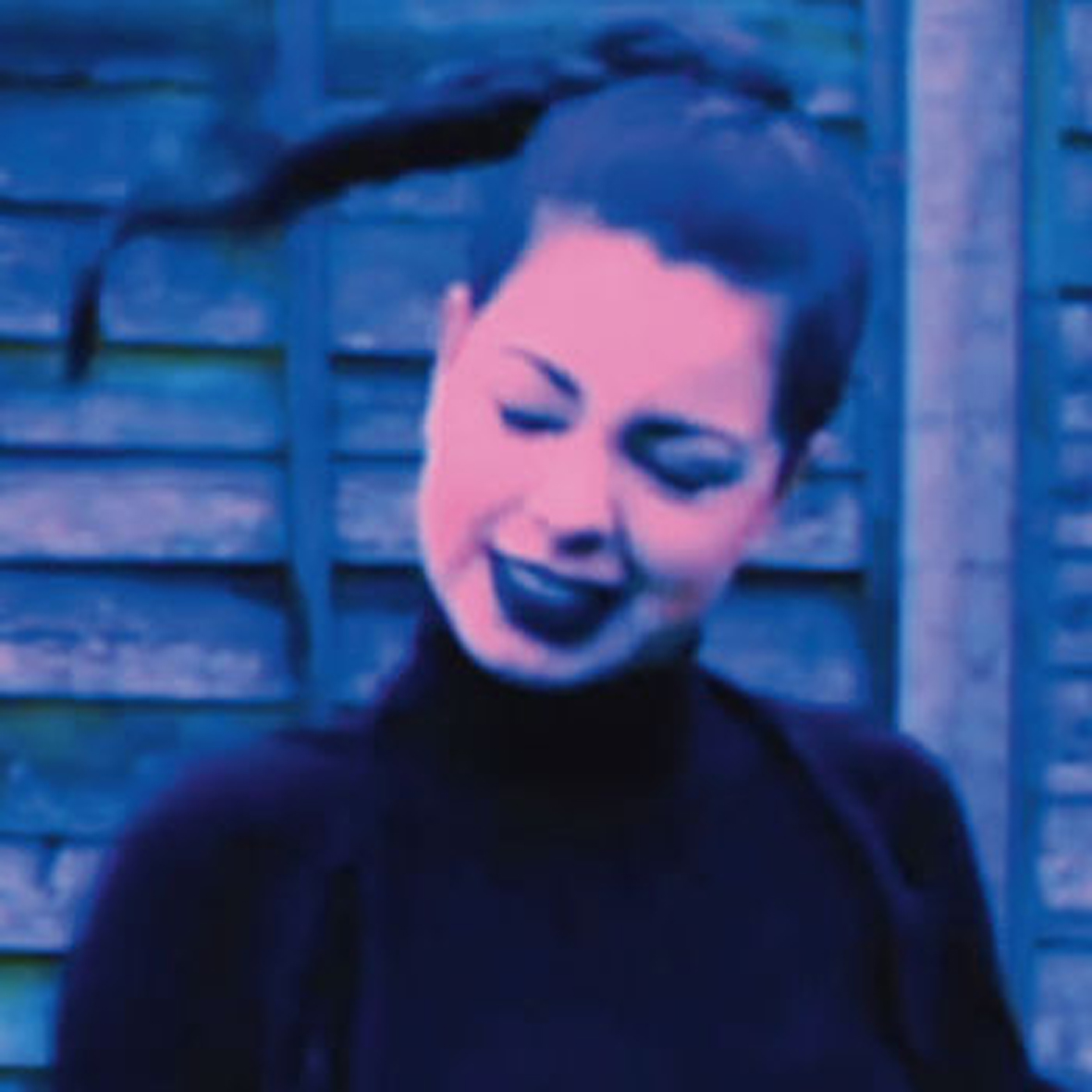 In a continuation of an amusing trend begun with 2014’s stellar Feeling Tropical Feeling Romantic Feeling Ill mixtape, Demdike Stare have yet again coaxed another odd non-Shapes release out of the singular Mica Levi.  This one is perhaps even stranger than its predecessor, as it is centered around an infectiously skittering and warbling 2-step "single" that Levi and frequent collaborator Tirzah released to YouTube all the way back in 2011.  The rest of Taz and May Vids is filled out with a few other excellent Tirzah collaborations, a Demdike Stare remix of a Tirzah collaboration, and a couple of very different outliers.  While the Brother May-assisted "More Red" is admirably bonkers, the primary appeal of this EP is definitely the murky, poppy, and beautifully warped Tirzah pieces.  Admittedly, it seems like Sean Canty and Miles Whittaker had quite a struggle in collecting even a mere EP's worth of material (the three Tirzah songs add up to barely 8 minutes), but these scraps from the vault offer some dazzling (if fleeting) glimpses of Levi's skewed and inscrutable pop genius.
In a continuation of an amusing trend begun with 2014’s stellar Feeling Tropical Feeling Romantic Feeling Ill mixtape, Demdike Stare have yet again coaxed another odd non-Shapes release out of the singular Mica Levi.  This one is perhaps even stranger than its predecessor, as it is centered around an infectiously skittering and warbling 2-step "single" that Levi and frequent collaborator Tirzah released to YouTube all the way back in 2011.  The rest of Taz and May Vids is filled out with a few other excellent Tirzah collaborations, a Demdike Stare remix of a Tirzah collaboration, and a couple of very different outliers.  While the Brother May-assisted "More Red" is admirably bonkers, the primary appeal of this EP is definitely the murky, poppy, and beautifully warped Tirzah pieces.  Admittedly, it seems like Sean Canty and Miles Whittaker had quite a struggle in collecting even a mere EP's worth of material (the three Tirzah songs add up to barely 8 minutes), but these scraps from the vault offer some dazzling (if fleeting) glimpses of Levi's skewed and inscrutable pop genius.
DDS
Mica Levi is an artist that I have always had a very hard time wrapping my head around, as she seems to effortlessly bounce from one direction to another with the only consistent thread being that she sounds like absolutely no one else who is working similar territory.  She also seems at times to be like the creative equivalent of a broken fire hydrant, either spewing out great ideas too quickly to fully explore them or else presenting them in a fractured, over-caffeinated way.  However, her incredible score to Under The Skin stands as a very convincing counterargument to that theory.  The Taz and May Vids EP, however, does not: these (barely) 7 songs are basically one tossed-off stellar idea after another, which is simultaneously wonderful and exasperating.  For example, the piece that birthed the entire release ("GO") is essentially just a decent beat, the word "go," and a completely generic chord progression at its core, but that meager content is executed absolutely brilliantly and audaciously.  For one, the chords sound like they are coming from a broken calliope.  Secondly, it is piled with chopped and gibbering vocal snippets that sound absolutely deranged and hallucinatory.  Sadly, it all lasts just two minutes, but that is more than enough to make a huge impression: "GO" lies in the lunatic nexus in which a circus, a precocious child who has eaten too much sugary cereal, Aphex Twin’s "Windowlicker," and a seizure all gloriously intersect.
"Dare You," also featuring Tirzah, is built from similarly bizarre and minimal content, sounding like someone chopped up a percussion loop from Janet Jackson’s Rhythm Nation, then decided to slow it way down and make it seem seasick.  While not nearly as strong as "GO," it does feature an absolutely killer break where it settles into a heavy, shuffling groove.  Unfortunately, "Dare You" does not even manage to hit the two-minute mark, so it is nice that there is an extended Demdike Stare remix at the end of the album.  Canty and Whittaker do not do anything particularly transformative with the material, but they do a fine and reverent job of stretching it out, focusing on the best part (the great beat), and downplaying the weaker aspects.  The third Tirzah collaboration ("Trip6Love"") is even less of a complete song than the other two, but its clattering percussion and fuzzed-out jabbering happen over a very cool and obsessively repeating loop of fat synth swells.  In fact, it sounds like Levi and Tirzah just decided to go crazy over an extremely promising Under the Skin piece that somehow did not make the cut for the soundtrack.  Elsewhere, "More Red" is another wonderfully brainsick stand-out, sculpting a clanging industrial percussion loop, sirens, and pitch-shifted rapping into something so relentlessly annoying and one-note that it almost becomes brilliant.  Almost.
The EP is rounded out by a couple of incidental pieces, the 52-second "Intro" and 3-minute "Chimes 7."  Unsurprisingly, both are quite strange.  I would probably like "Intro" quite a lot, however, if only its plinking and lurching calliope groove had been given a chance to blossom into something more rather than just abruptly ending.  "Chimes 7," on the other hand, maybe goes on a little too long (a truly rare crime for Mica).  It does feature some great twanging and rusted-sounding string textures though.  All of that basically adds up to an alternately disorienting, dazzling, frustrating, and fascinating mixed-bag of an EP: the better moments are legitimately great, but they are always far too short-lived and it is quite clear that Mica did not lose any sleep worrying about songcraft.  Taz and May Vids reminds me of one of those bonus "sessions and outtakes" discs that are often appended to classic albums by folks like Miles Davis, but in this case, these are sessions and outtakes are from a great album that does not actually exist.  That said, I like it anyway: it is not fully formed by any means, but it is both original and inspired.  Also, it is certainly more visceral and attention-grabbing than some of Mica's other releases.  The only caveat is that it is definitely the musical equivalent of a delicious junk food fix rather than a satisfying meal.
 
Read More

